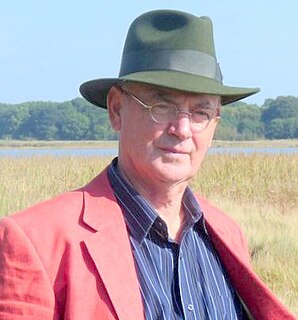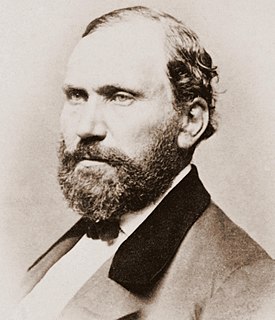
A weasel is a mammal of the genus Mustela of the family Mustelidae. The genus Mustela includes the least weasels, polecats, stoats, ferrets and minks. Members of this genus are small, active predators, with long and slender bodies and short legs. The family Mustelidae is often referred to as the "weasel family". In the UK, the term "weasel" usually refers to the smallest species, the least weasel (M. nivalis).
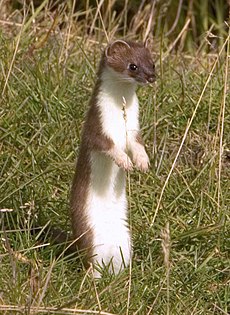
The stoat, also known as the short-tailed weasel or simply the weasel in Ireland where the least weasel does not live, is a mammal of the genus Mustela of the family Mustelidae native to Eurasia and North America, distinguished from the least weasel by its larger size and longer tail with a prominent black tip. Originally from Eurasia, it crossed into North America some 500,000 years ago, where it naturalized and joined the notably larger, closely related native long-tailed weasel.
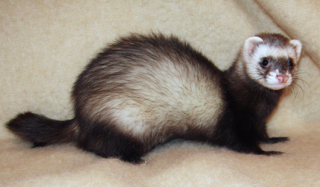
The ferret is the domesticated form of the European polecat, a mammal belonging to the same genus as the weasel, Mustela, in the family Mustelidae. Their fur is typically brown, black, white, or mixed. They have an average length of 51 cm (20 in), including a 13 cm (5.1 in) tail, weigh about 1.5–4 pounds (0.7–2 kg), and have a natural lifespan of 7 to 10 years. Ferrets are sexually dimorphic predators, with males being substantially larger than females.

The common brushtail possum is a nocturnal, semi-arboreal marsupial of the family Phalangeridae, native to Australia, and the second-largest of the possums.

The weka is a flightless bird species of the rail family. It is endemic to New Zealand, where four subspecies are recognized. Weka are sturdy brown birds, about the size of a chicken. As omnivores, they feed mainly on invertebrates and fruit. Weka usually lay eggs between August and January; both sexes help to incubate.
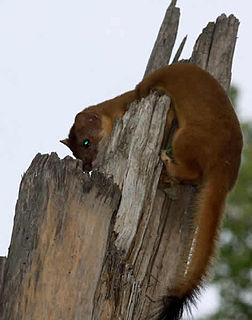
The long-tailed weasel, also known as the bridled weasel or big stoat, is a species of mustelid distributed from southern Canada throughout all the United States and Mexico, southward through all of Central America and into northern South America. It is distinct from the short-tailed weasel, also known as a "stoat", a close relation which originated in Eurasia and crossed into North America some half million years ago.

The least weasel, common weasel, or simply weasel in the UK and much of the world, is the smallest member of the genus Mustela, family Mustelidae and order Carnivora. It is native to Eurasia, North America and North Africa, and has been introduced to New Zealand, Australia, Malta, Crete, Bermuda, Madeira Island, the Azores, the Canary Islands, São Tomé, the Falkland Islands, Argentina and Chile. It is classified as least concern by the IUCN, due to its wide distribution and large population throughout the Northern Hemisphere.

The New Zealand bellbird, also known by its Māori names korimako and makomako, is a passerine bird endemic to New Zealand. It has greenish colouration and is the only living member of the genus Anthornis. The bellbird forms a significant component of the famed New Zealand dawn chorus of bird song that was much noted by early European settlers. The explorer Captain Cook wrote of its song "it seemed to be like small bells most exquisitely tuned". Its bell-like song is sometimes confused with that of the tui. The species is common across much of New Zealand and its offshore islands as well as the Auckland Islands.
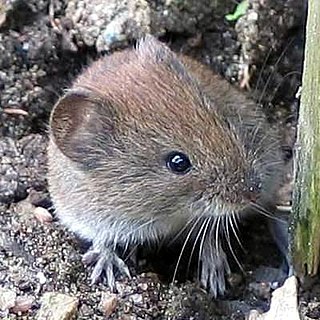
The bank vole is a small vole with red-brown fur and some grey patches, with a tail about half as long as its body. A rodent, it lives in woodland areas and is around 100 millimetres (3.9 in) in length. The bank vole is found in western Europe and northern Asia. It is native to Great Britain but not to Ireland, where it has been accidentally introduced, and has now colonised much of the south and southwest.

The common vole is a European mammal.

The Siberian weasel is a medium-sized weasel native to Asia, where it is widely distributed and inhabits various forest habitats and open areas. It is therefore listed as Least Concern on the IUCN Red List.

The Siberian chipmunk or common chipmunk appears across northern Asia from central Russia to China, Korea, and Hokkaidō in northern Japan. The Siberian chipmunk was imported from South Korea and introduced in Europe as a pet in the 1960s. It is the only chipmunk found outside North America, and this animal is classed either as the only living member of the genus Eutamias, or as a member of a genus including all chipmunks.

The mountain weasel, also known as the pale weasel, Altai weasel or solongoi, primarily lives in high-altitude environments, as well as rocky tundra and grassy woodlands.
This weasel rests in rock crevices, tree trunks, and abandoned burrows of other animals or the animals it previously hunted. The home range size of this animal is currently unknown. Geographical distribution for this species lies in parts of Asia from Kazakhstan, Tibet, and the Himalayas to Mongolia, northeastern China, and southern Siberia. The most common area for this species, however, is Ladakh, India. The conservation status, according to the IUCN, is near threatened because it is considered to be in significant decline and requires monitoring mainly because of habitat and resource loss.

The African striped weasel, the lone member of its genus, is a small, black and white weasel native to sub-Saharan Africa.

Thunder Oak is a 1997 heroic fantasy novel written by British author Garry Kilworth. It is the first novel in the Welkin Weasels series. The novel follows a group of anthropomorphised weasels in their quest to restore balance to their home after the disappearance of humans leaves a power vacuum, which has been filled by aggressive stoats.

The yellow-bellied weasel is a species of weasel. It lives in the pine forests of Bhutan, China, India, Laos, Myanmar, Nepal, Thailand, and Vietnam. The yellow-bellied weasel is rated "Least Concern" by the IUCN Red List. The yellow-bellied weasel is named for its yellow-colored underbelly. The top of its body and the tail are dark brown. Yellow-bellied weasels have a body length of 9.8-10.6 inches (25–27 cm.) and a tail length of 4.9-5.9 inches (12.5–15 cm.). The tail is about half the length of the body. Yellow-bellied weasels weigh approximately 3.3 pounds (1.5 kg.).
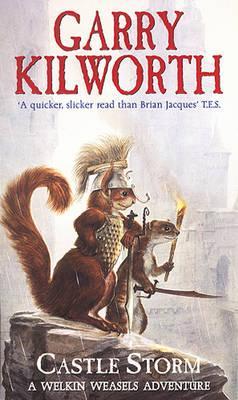
Castle Storm is the second novel in the Welkin Weasels series by Garry Kilworth. Picking up shortly after the end of Thunder Oak, the novel centres on the anthropomorphised weasels searching for the humans that mysteriously vanished from their homeland many years before. Following a clue found in the first book, the weasels, led by the outlaw Sylver and pursued by the stoat Sheriff Falshed, journey to a far-away city where they find themselves entangled in a battle between rivalling clans of squirrels. Published in Germany under the title "Belagert die Sturmburg."

Stoats were introduced into New Zealand to control introduced rabbits and hares, but are now a major threat to the native bird population. The natural range of the stoat is limited to parts of the Northern Hemisphere. Immediately before human settlement, New Zealand did not have any land-based mammals apart from bats, but Polynesian and European settlers introduced a wide variety of animals.
The Celtic broadleaf forests are a terrestrial ecoregion native to western Great Britain and most of the island of Ireland.
The Celtic broadleaf forests occupy the eastern part of Ireland; the majority of Wales; the southwest of England, including Cornwall and Devon; central and northern parts England; and southern Scotland extending along the North Sea coast through most of Aberdeenshire and Moray. The forest is part of the temperate broadleaf and mixed forest biome of Western Europe.


